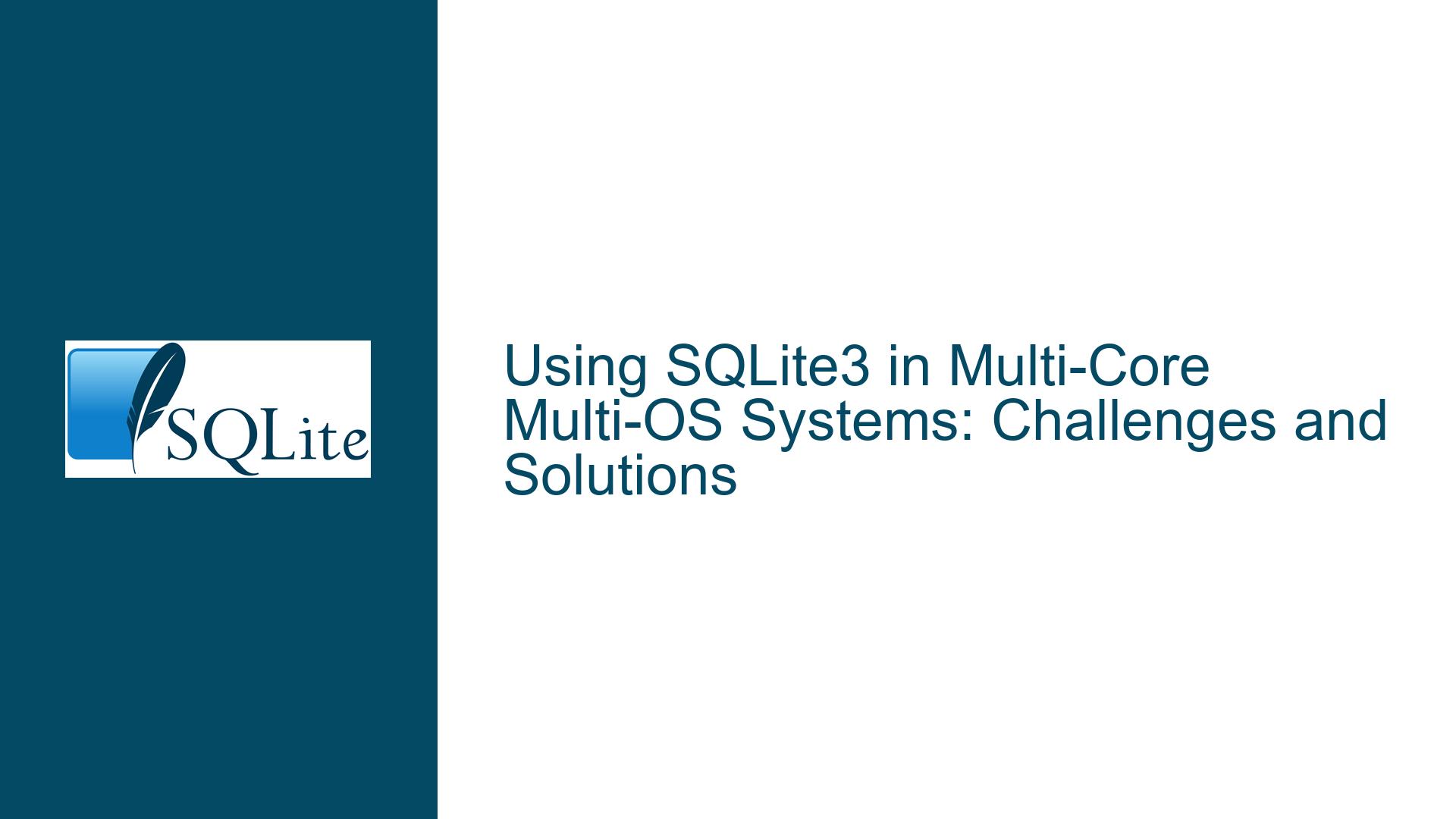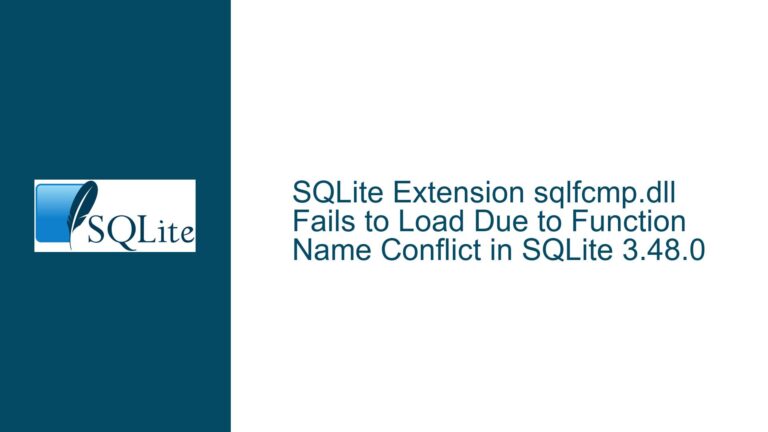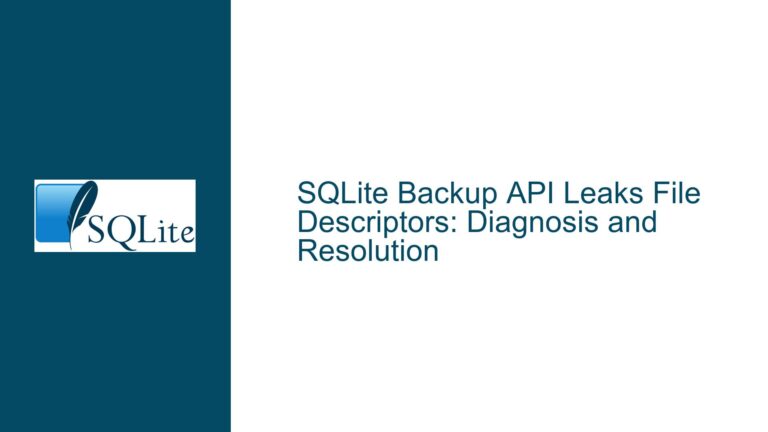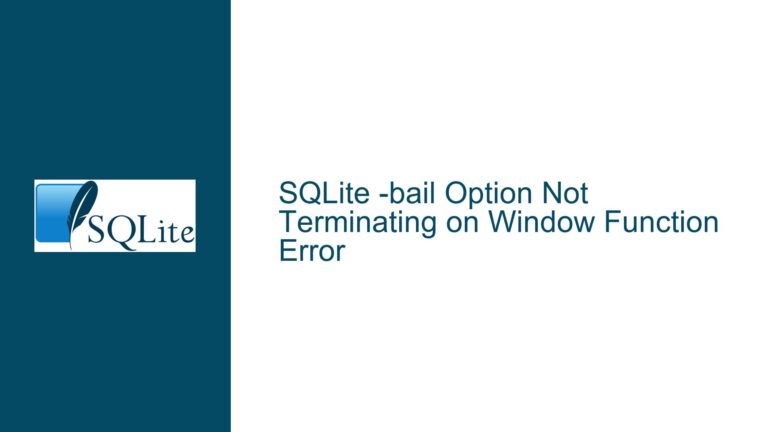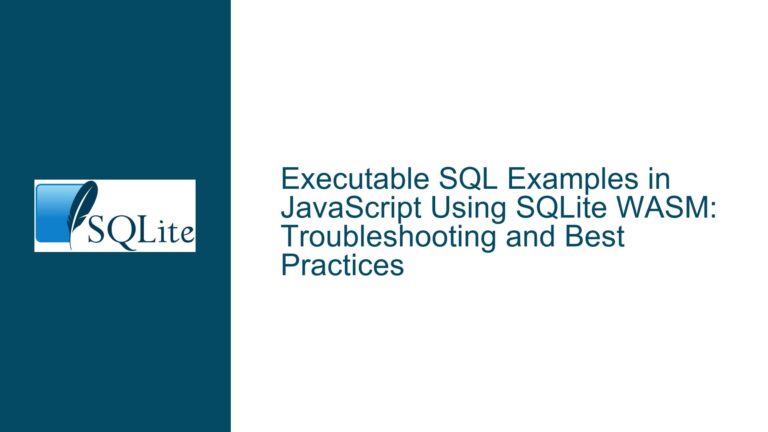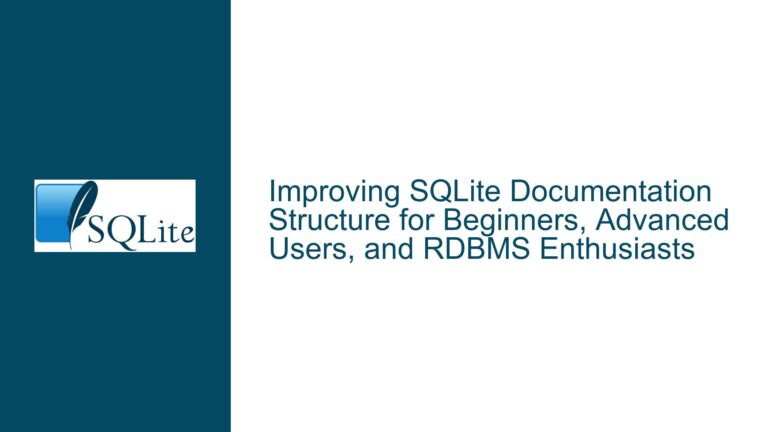Using SQLite3 in Multi-Core Multi-OS Systems: Challenges and Solutions
SQLite3 Concurrency in Multi-Core Multi-OS Environments
SQLite3 is a lightweight, serverless, and self-contained SQL database engine that is widely used in embedded systems, mobile applications, and desktop software. One of the key challenges when using SQLite3 in multi-core multi-OS systems is ensuring proper concurrency and data integrity across different operating systems and hardware cores. In such environments, applications running on different cores and operating systems may need to access the same SQLite3 database simultaneously. This scenario introduces complexities related to file locking, I/O latency, and thread safety, which must be carefully managed to avoid data corruption and performance degradation.
In a typical multi-core multi-OS setup, one core might run a general-purpose operating system like Linux, while the other core runs a Real-Time Operating System (RTOS). The applications on both cores may need to read from and write to a shared SQLite3 database. However, SQLite3’s concurrency model, file locking mechanisms, and I/O behavior can vary significantly depending on the operating system, filesystem, and SQLite3 configuration. For instance, the Write-Ahead Logging (WAL) mode offers different concurrency characteristics compared to the legacy rollback journal mode. Additionally, the filesystem used to store the database (e.g., FAT32, ext4) can impact whether file locking is supported and how effectively it works.
The core issue in such environments is ensuring that SQLite3 can handle concurrent access from multiple cores and operating systems without compromising data integrity or performance. This requires a deep understanding of SQLite3’s concurrency modes, thread safety options, and the limitations imposed by the underlying filesystem and operating systems. Furthermore, the real-time nature of the RTOS adds another layer of complexity, as SQLite3’s I/O operations may not be deterministic enough to meet the strict timing requirements of real-time systems.
Interrupted Write Operations and Filesystem Limitations
One of the primary causes of SQLite3 database corruption in multi-core multi-OS systems is interrupted write operations. When an application running on one core begins a write operation, but the operation is interrupted due to a power failure, system crash, or context switch, the database can be left in an inconsistent state. This is particularly problematic in environments where the database is stored on a filesystem that does not support atomic writes or reliable file locking, such as FAT32.
FAT32, commonly used in embedded systems, lacks robust file locking mechanisms. Even if the Linux side of the system implements file locking, the RTOS’s FAT32 driver might ignore these locks, leading to race conditions and data corruption. For example, if the Linux application acquires a lock on the database file, the RTOS application might still be able to write to the file, bypassing the lock. This can result in overlapping write operations, which corrupt the database.
Another issue is the I/O latency of SQLite3 operations, especially in real-time systems. SQLite3’s I/O operations, such as updating a record or rebalancing an index, are not guaranteed to complete within a bounded time. In an RTOS environment, where timing predictability is critical, this unbounded latency can cause the system to miss deadlines or enter an undefined state. For instance, an UPDATE query that modifies a record in a large table might trigger index rebalancing, which can take an unpredictable amount of time. This makes SQLite3 unsuitable for real-time tasks that require deterministic I/O behavior.
Additionally, the thread safety of SQLite3 depends on how it is compiled and configured. SQLite3 can be compiled in single-threaded, multi-threaded, or serialized modes. In multi-threaded mode, multiple threads can access the database concurrently, but this requires proper synchronization to avoid race conditions. If the RTOS does not support the threading model used by SQLite3, or if the application does not handle threading correctly, concurrent access from multiple cores can lead to data corruption.
Implementing WAL Mode and Shared-Memory Message Queues
To address the challenges of using SQLite3 in multi-core multi-OS systems, several strategies can be employed. The first is to enable Write-Ahead Logging (WAL) mode, which improves concurrency and reduces the likelihood of database corruption. In WAL mode, write operations are appended to a separate log file instead of modifying the main database file directly. This allows readers to continue accessing the database while writes are in progress, reducing contention and improving performance. However, WAL mode requires a filesystem that supports shared memory and robust file locking, which may not be available on all RTOS platforms.
Another approach is to move all persistent I/O operations to the Linux side of the system. Instead of having the RTOS write directly to the SQLite3 database, the RTOS can push data into a shared-memory message queue. The Linux application can then consume the data from the queue and write it to the database in batches. This approach transforms the problem from one of unbounded I/O latency on the RTOS side to one of hard-bound RAM write times, which are more predictable and suitable for real-time systems. The shared-memory message queue can be implemented using a circular buffer with appropriate locking mechanisms to ensure data integrity.
For example, consider a system where the RTOS collects sensor data and needs to store it in a SQLite3 database. Instead of having the RTOS write the data directly to the database, the RTOS can write the data to a shared-memory buffer. The Linux application can periodically read the data from the buffer and insert it into the database. This approach decouples the real-time data collection from the non-real-time database operations, ensuring that the RTOS meets its timing requirements while the Linux application handles the persistent storage.
To further improve performance and reliability, the SQLite3 database can be stored on a filesystem that supports atomic writes and robust file locking, such as ext4 or NTFS. If FAT32 must be used due to hardware constraints, additional measures can be taken to mitigate the risk of data corruption. For instance, the application can use a custom file locking mechanism or implement a watchdog timer to detect and recover from interrupted write operations.
Finally, the SQLite3 library should be compiled with the appropriate thread safety options for the target environment. In multi-core systems, the multi-threaded or serialized mode should be used to ensure that concurrent access from multiple threads is handled correctly. The number of worker threads used for sorting and indexing operations can be configured using the PRAGMA worker_threads command, or set to zero to disable worker threads entirely.
By combining these strategies, it is possible to use SQLite3 in multi-core multi-OS systems while maintaining data integrity and meeting performance requirements. However, careful design and testing are essential to ensure that the chosen approach works effectively in the specific environment and use case.
| Strategy | Description | Benefits | Limitations |
|---|---|---|---|
| Enable WAL Mode | Use Write-Ahead Logging to improve concurrency and reduce contention. | Allows readers and writers to access the database simultaneously. | Requires filesystem support for shared memory and robust file locking. |
| Shared-Memory Message Queues | Move persistent I/O to Linux using a shared-memory buffer for RTOS data. | Decouples real-time data collection from non-real-time database writes. | Requires additional implementation effort for the shared-memory mechanism. |
| Use Robust Filesystems | Store the database on a filesystem that supports atomic writes and locking. | Reduces the risk of data corruption due to interrupted writes. | May not be feasible on hardware with limited filesystem options. |
| Configure Thread Safety Options | Compile SQLite3 with multi-threaded or serialized mode for concurrent access. | Ensures correct handling of concurrent access from multiple threads. | Requires proper synchronization and may increase complexity. |
In conclusion, using SQLite3 in multi-core multi-OS systems presents unique challenges related to concurrency, file locking, and I/O latency. By understanding these challenges and implementing appropriate strategies, it is possible to design a robust and efficient database solution that meets the requirements of both general-purpose and real-time operating systems.
